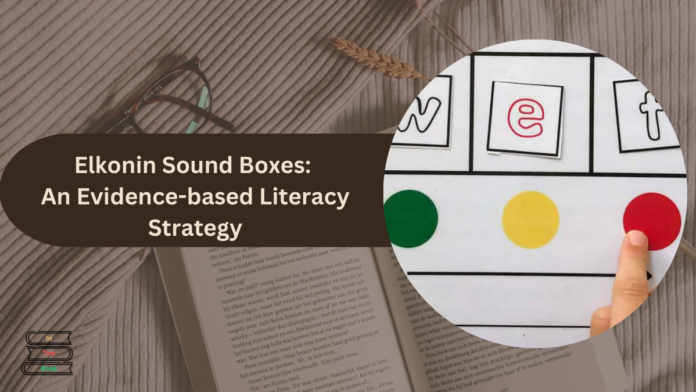Elkonin boxes, also known as sound boxes, are a powerful tool used in literacy instruction to help students develop phonemic awareness. This evidence-based strategy involves segmenting and blending sounds in words, which is important for reading and spelling proficiency.
Here, we will explore what Elkonin sound boxes are, how they are used, and how the latest scientific discoveries support their effectiveness.
Contents
What are Elkonin sound boxes?
Elkonin sound boxes were developed by Russian psychologist D.B. Elkonin in the 1960s. They consist of a series of boxes or squares, each representing a single sound or phoneme in a word.
When using Elkonin boxes, students move a token or marker into a box for each sound they hear in a word. This process helps students break down words into their individual sounds and then blend them back together to form the whole word.
How to use Elkonin sound boxes
Here are teh steps that will tell you how to use Elkonin sound boxes:
- Preparation: Collect materials like Elkonin box templates, tokens, and a list of target words. Printable Elkonin boxes are available online and can be customized for different levels of difficulty.
- Instruction: Begin by pronouncing a target word slowly, emphasizing each sound. For example, for the word “cat,” stretch out the sounds: /k/ /a/ /t/.
- Segmentation: Have the student repeat the word and then push a token into a box for each sound they hear. In the case of “cat,” they would push three tokens into three boxes.
- Blending: After all sounds are segmented, guide the student to blend the sounds back together by running their finger under the boxes and saying the whole word again.
- Reflection: Discuss with the students how the boxes helped them hear and isolate each sound in the word. This reflection reinforces their understanding of phonemic segmentation and blending.
Scientific support for Elkonin sound boxes
Research has consistently shown that Elkonin sound boxes are effective in improving phonemic awareness, reading, and spelling skills. Studies by Ross and Joseph (2018) demonstrated that using word boxes significantly helped preschool to elementary students acquire these critical literacy skills.
Also, the National Association of Special Education Teachers highlights that Elkonin boxes promote phonological awareness and letter-sound correspondences, important components of early reading instruction.
Further research indicates that Elkonin sound boxes can aid in orthographic mapping, the process by which readers form letter-sound connections until they become automatic sight words.
This process is crucial for developing fluent reading skills, especially in students with learning difficulties.
FAQs
How do you count phonemes using Elkonin boxes?
Elkonin boxes are perfect for counting phonemes. Each sound in a word is represented by a separate box. For example, the word “cat” has three phonemes: /k/, /a/, and /t/, so it would require three boxes.
How do Elkonin boxes support structured literacy?
Elkonin boxes align with the principles of structured literacy by providing a clear, systematic approach to phonemic awareness and phonics instruction. They help students make the connection between sounds and letters, which is fundamental for reading and writing.
Who can benefit from using Elkonin boxes?
All students can benefit from using Elkonin boxes, particularly those at risk for reading difficulties or those with learning disabilities. They are also effective for English language learners as they provide a visual and tactile method to understand sound-letter relationships.
Can Elkonin boxes be used for spelling practice?
Yes, Elkonin boxes are excellent for spelling practice. After segmenting the sounds in a word, students can write the corresponding letters in each box, reinforcing their understanding of phoneme-grapheme mapping.
Conclusion
Elkonin sound boxes are a proven, effective strategy for developing phonemic awareness and improving literacy skills. By segmenting and blending sounds, students gain a deeper understanding of the relationship between sounds and letters, which is important for reading and spelling.
The use of Elkonin boxes is supported by extensive research and is beneficial for a wide range of learners. Incorporating this tool into literacy instruction can provide significant advantages for students’ reading development.
- 7 Study Tips to Use with Your VCE French Tutor
- Tips for Writing an Essay About Your Favorite Book
- Optimizing PDFs for Tech Presentations: Tips for Clear Communication
- Bankroll Management Across the Board
- WriteaPaper Review: Can It Actually Deliver a Great Paper?

Chandler is an avid automobile enthusiast who is passionate about all things on wheels. From the latest car models to classic vintage rides, I love exploring the automotive world’s intricate details and engineering marvels. With years of experience in test-driving, reviewing, and analyzing cars, I provide readers with comprehensive insights and honest opinions.



























